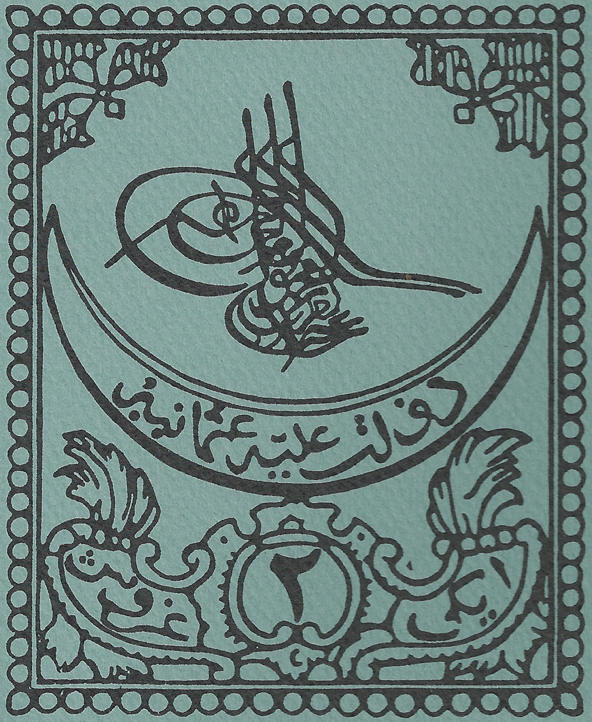1863 Tughra, 2 kurus
|
Provenance:
Paper Type: Canson Mi-Tientes 160 gm/m-2 Wave Green Paper Size: 9.5” x 12.5” [24cm x 32cm\ Image size: 4" x 5" [10cm x 13cm] Edition Size: 50 Inks Used: Van Son Rubber-based Black ink Date cut: 16 Nov 2011 Production Notes: Image from a published catalog of Turkish postage stamps was scanned and printed in reverse at size on parchment tracing paper [Bienfang No. 100]. This was glued to a linoleum block using Photo Mount 3M No.6092 aerosol adhesive and cut through the paper using a stereo dissecting microscope [Bausch & Lomb 13x]. Although the postal replica series is generally presented with a genuine stamp collaged below the print, the stamp was to expensive and therefore omitted. of the first issue of Turkish Ottoman postage stamp was scanned from a published philatelic source. |
Postage stamps were first issued by Great Britain in 1840 to regularize the payment of fees for letters sent through the postal system. Within a few years most European powers had issued stamps of their own. The Ottoman Empire was a late entry on January 1, 1863 with a stamp centered around the Tughra, the Turkish emblem of sovereignty and seal of the current sultan Abdülaziz I. Below the seal was an inverted crescent bearing the inscription "Devleti Aliye Osmaniye," or "The Sublime Ottoman Empire" in Turkish-Arabic script. Hilal, the very slight crescent moon visible after the new moon, was iconic in Islamic cultures as the hallmark of their lunar month.
The Tughra was used as a seal and signature for the sultan, and documents were not official without the seal. The designer was Sikkezenbachi Abdulfettah Efendi, born in 1814 at Chios (Sakiz) Island and brought to Istanbul as a slave at a very young age. He was trained as a calligrapher and employed by the Imperial Mint to design the first stamp for the realm. [http://www.stampsociety.com] The Arabic calligraphy of the Tughra is quite complex. Available:
$25.00 USD $500 MXN Shipping: $15.00 with tracking to USA |

